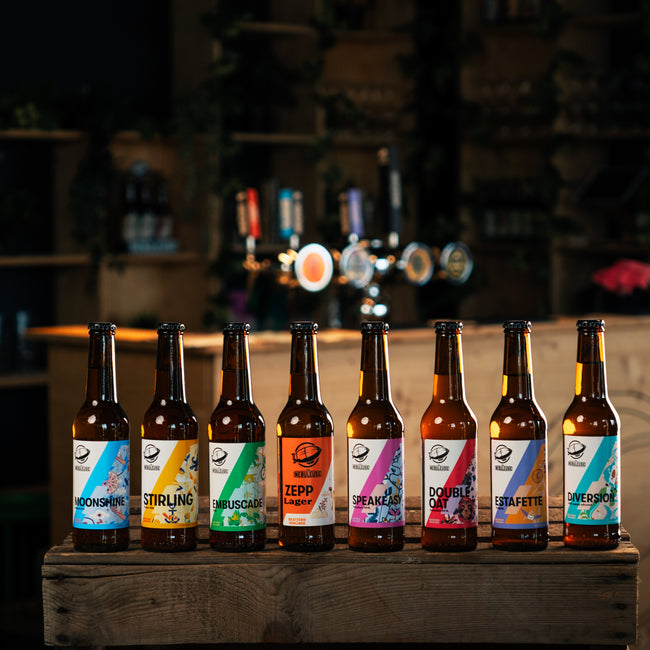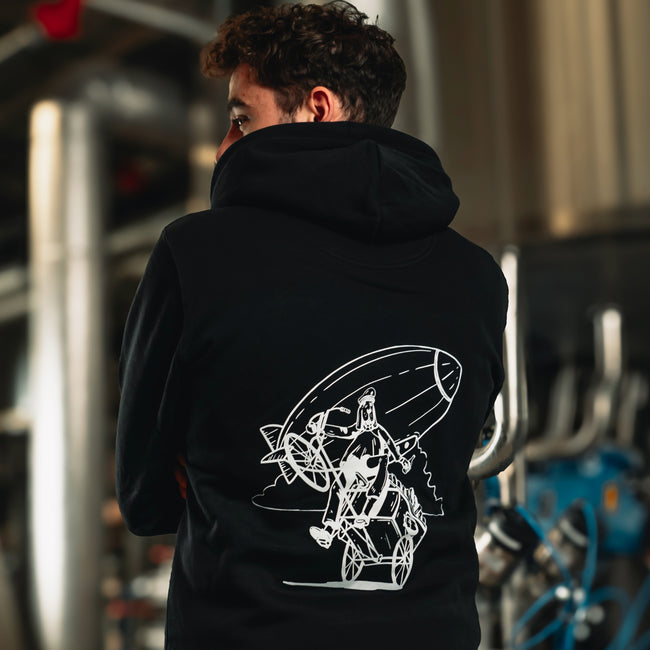Everything you need to know about hops: the star ingredient of craft beer

From a simple natural preservative to the architect of modern flavors, hops have come a long way in the history of beer. This climbing plant from the Cannabaceae family fascinates with its chemical complexity and aromatic richness. While each of the four fundamental ingredients makes its own unique contribution to beer , hops have gradually emerged as the most spectacular of them all. Over the centuries, their role has evolved profoundly: initially used for their antibacterial properties, which helped preserve beer during long sea voyages, they have gradually become the distinctive signature of craft beers, opening up a world of possibilities for contemporary brewers.
This evolution reflects an ever-increasing understanding of its properties. From the Hanseatic merchants who used it empirically to modern brewers who have mastered its molecular subtleties, hops have continued to reveal new secrets.
Hops demystified: understanding the mechanisms of action
Alpha Acids: The Science Behind Bitterness
The bitterness of a beer is born from a precise chemical dance: the isomerization of alpha-acids. Nestled in the lupulin glands of the female cones, these compounds—humulone, cohumulone, and adhumulone—transform under the influence of heat to give rise to the distinctive character of beer. This transformation, far from trivial, requires perfect mastery of brewing conditions.
Temperature plays a crucial role: too low, it will prevent complete isomerization; too high, it risks developing undesirable flavors. pH also influences this molecular ballet: a more alkaline wort will promote transformation, while an overly acidic environment will slow it down. Boiling time, meanwhile, determines the final rate of isomerization.
To capture this complex alchemy, let's dive into a glass of Zepp' Craft Lager . In this refined creation, the noble Saazer and Spalter Select hops reveal their full potential thanks to careful mastery of these parameters. The result? An elegant bitterness that intertwines with characteristic floral notes, testifying to the precision required in the isomerization process.
The Mystery of Essential Oils: Aromatic Compounds and Their Impact
At the heart of hops lies a true molecular symphony. Monoterpenes and sesquiterpenes orchestrate an aromatic ballet where each compound plays its part: herbaceous notes from myrcene, citrus touches from limonene, earthy accents from humulene, not to mention the floral nuances of farnesene. This complexity explains the aromatic richness that a single hop variety can develop.
Preserving these delicate compounds is an art. Sensitive to heat and oxidation, they require precise extraction techniques and perfect timing. Temperature, time of addition, contact time: each parameter influences their final expression in the beer.
Take the Ambuscade IPA . This bold creation reveals all the complexity of hops' essential oils. The combination of Mandarina Bavaria, Cascade, and Amarillo creates a sensory explosion where citrus dances with resinous notes. A perfect example of the art of modern hopping, where each variety brings its unique touch to the final harmony.
Perfect Timing: The Art of Modern Hopping
First wort hopping vs. late hopping: impact on the aromatic profile
The moment hops are added shapes the very soul of the beer. Between first wort hopping, which infuses a gentle bitterness from the mashing stage, and late hopping, which preserves the most delicate aromas, each technique writes its own flavor story. This mastery of timing transforms brewing into a true choreography where every movement is calculated.
First-wort hopping offers a subtle approach: by adding hops early in the process, the bittering compounds integrate more harmoniously. Late hopping, on the other hand, preserves aromatic freshness by minimizing heat exposure. Between these two extremes, whirlpool hopping opens up a new dimension, allowing for optimal extraction at intermediate temperatures.
How do you achieve the perfect balance between bitterness and aroma? The answer may lie in a glass of Stirling Pale Ale . This beer masters the art of timing with panache: the Northern Brewer lays the bitter foundation, while the Cascade and Simcoe enrich the aromatic palette at just the right moment. A precise orchestration that creates a perfectly balanced citrus harmony.
Dry hopping: cold extraction technique
The dry hopping revolution has revolutionized our approach to aromas. In this cold waltz, which takes place between 16 and 20°C, hops reveal their most subtle secrets. This delicate extraction technique captures the most volatile aromatic compounds without altering them with heat.
The process requires patience and precision. Too short, and it won't allow for complete extraction; too long, and it risks developing undesirable vegetal flavors. The temperature itself influences the speed and nature of the extraction: warmer speeds up the process but can alter the finesse of the aromas; cooler preserves their delicacy but requires more time.
New horizons for hops in craft beer
The Evolution of Varieties: From Traditional to Experimental
From traditional Saaz to modern varieties, the evolution of hops tells the story of a perpetual quest for new flavors. Modern breeders play the role of alchemists, combining ancestral techniques and contemporary innovations to create ever more expressive varieties. This constant research enriches brewers' palette, allowing them to explore new taste territories.
Emerging techniques: biotransformation and cryo-hopping
Biotransformation opens a new chapter in the history of hops. In brewing tanks, a fascinating alchemy occurs when yeast and hops meet. Yeast enzymes transform hop compounds, creating new flavor molecules that are otherwise impossible to obtain. This complex interaction depends on many factors: the yeast strain used, the fermentation temperature, and the timing of hop addition.
In the vats of La Nébuleuse, Double Oat DIPA perfectly embodies this innovation. Its unique aromatic palette is born from the interaction between Mosaic hops and a carefully selected American yeast. The result? A true UFO that shakes up the codes of the New England style, where notes of mango blend with a creamy texture thanks to oat flakes.
Cryo-hopping takes innovation even further. By isolating precious lupulin glands through cold, this modern technique extracts the pure essence of hop aromas. This concentration process eliminates unwanted compounds while preserving the most precious essential oils, paving the way for ever more precise and intense expressions.
Conclusion
Hops continue to surprise us, blending centuries-old tradition with modern audacity. Their chemical complexity, combined with contemporary techniques, offers brewers a limitless playing field. The future promises many more discoveries: new varieties with unique profiles, innovative extraction techniques, and a more detailed understanding of biotransformation mechanisms. More than just an ingredient, hops embody the spirit of innovation that drives craft beer, reminding us that each brew is a new opportunity to explore the boundaries of what is possible.









